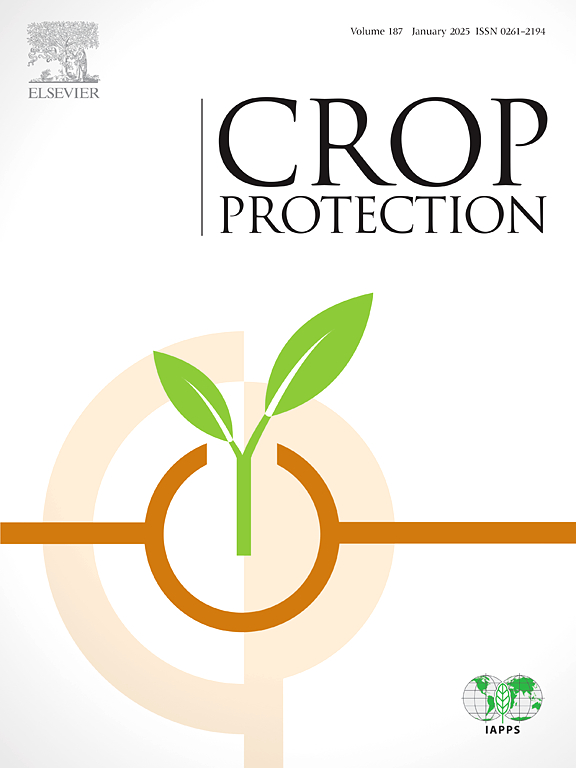Dynamics of flubendiamide resistance in Chrysodeixis includens (Walker) (Lepidoptera: Noctuidae)
IF 2.5
2区 农林科学
Q1 AGRONOMY
引用次数: 0
Abstract
Chemical insecticides are used to manage Chrysodeixis includens in soybean (Glycine max (L.) Merrill). Flubendiamide was selected for this study due to its widespread application and its role as a key insecticide for controlling lepidopteran pests, including C. includens. Frequent insecticide use exerts high selection pressure that can cause control failure caused by an increased frequency of resistant insects in the population. However, in the absence of selection pressure, resistant insects may exhibit fitness costs that can restore susceptibility. Therefore, this study aimed to examine the stability of C. includens resistance to flubendiamide and to evaluate the associated fitness costs. Resistance dynamics were evaluated for eight generations without selection pressure by flubendiamide, using three populations: resistant (CiResFlu), susceptible (SUSCI-15), and a mixture of 50% SUSCI-15 and 50% CiResFlu (SusRes). In each generation, a subset of insects were exposed to 0.5053 μg a.i. cm−2. To investigate the fitness costs, the biological parameters of the life cycle of the SUSCI-15 and CiResFlu populations were compared, and these parameters were used to construct the fertility life table. In the absence of selection pressure from flubendiamide, the CiResFlu population reverted to susceptibility. Based on the evaluation of the duration and viability of immature and adult stages and the estimation of parameters of the fertility life table, no adaptive costs were detected between the resistant and susceptible populations. Thus, flubendiamide resistance in C. includens is unstable, and no fitness costs were observed.
求助全文
约1分钟内获得全文
求助全文
来源期刊

Crop Protection
农林科学-农艺学
CiteScore
6.10
自引率
3.60%
发文量
200
审稿时长
29 days
期刊介绍:
The Editors of Crop Protection especially welcome papers describing an interdisciplinary approach showing how different control strategies can be integrated into practical pest management programs, covering high and low input agricultural systems worldwide. Crop Protection particularly emphasizes the practical aspects of control in the field and for protected crops, and includes work which may lead in the near future to more effective control. The journal does not duplicate the many existing excellent biological science journals, which deal mainly with the more fundamental aspects of plant pathology, applied zoology and weed science. Crop Protection covers all practical aspects of pest, disease and weed control, including the following topics:
-Abiotic damage-
Agronomic control methods-
Assessment of pest and disease damage-
Molecular methods for the detection and assessment of pests and diseases-
Biological control-
Biorational pesticides-
Control of animal pests of world crops-
Control of diseases of crop plants caused by microorganisms-
Control of weeds and integrated management-
Economic considerations-
Effects of plant growth regulators-
Environmental benefits of reduced pesticide use-
Environmental effects of pesticides-
Epidemiology of pests and diseases in relation to control-
GM Crops, and genetic engineering applications-
Importance and control of postharvest crop losses-
Integrated control-
Interrelationships and compatibility among different control strategies-
Invasive species as they relate to implications for crop protection-
Pesticide application methods-
Pest management-
Phytobiomes for pest and disease control-
Resistance management-
Sampling and monitoring schemes for diseases, nematodes, pests and weeds.
 求助内容:
求助内容: 应助结果提醒方式:
应助结果提醒方式:


